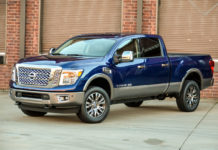He convinced Wall Street to loan him billions of critically needed cash just before the credit crunch began and he shepherded cost cuts that led Ford Motor Co. to its first profitable quarter in two years, but the honeymoon may be over for Chief Executive Alan Mulally.
As he approaches his one-year anniversary running the No. 2 U.S. automaker after General Motors Corp., Mulally generally gets high marks for starting to right a troubled company. But questions remain about whether the former Boeing Co. executive has the product know-how to lead Ford out of its tailspin and the spine to get enough concessions from the United Auto Workers to make the company competitive again.
“I think he's done some good things and I think he has missed the ball a few times,” said James E. Schrager, clinical professor of entrepreneurship and strategy at the University of Chicago Graduate School of Business. “Overall I'd give him pretty good marks.”
Mulally, hired by then-chairman and CEO Bill Ford on Sept. 5, was brought in to turn around a company that was unprepared when rising gasoline prices pushed people away from its trucks and sport utility vehicles.
Just two weeks after he started, the company unveiled another restructuring plan with more plant closures and early retirement or buyout offers to all 75,000 hourly workers. Ford at the time said it would take three years for the company to return to sustained profitability after billions of dollars in losses and said its share of the U.S. auto market would shrink to around 14 or 15 percent. It was 26 percent in the early 1990s.
Mulally began holding weekly meetings of top managers to keep the restructuring and new vehicle rollouts on track, offering help if needed and calming frayed nerves.
“The disruption and the uncertainty and the feelings of anxiety seemed to have disappeared,” said Gerald Meyers, a former chairman of American Motors Corp. who now teaches leadership at the University of Michigan.
Mulally's best move, according to Schrager, came three months into his tenure when he lined up the $23.4 billion line of credit by mortgaging Ford's factories and even its blue oval logo. Knowing the time was right because of free-flowing credit, Mulally put other business on the back burner to focus on the financing, Schrager said.
“That was beautiful execution on his part,” said Schrager, who has studied the auto industry for 35 years.
But after Mulally's first quarter, Ford posted the worst annual loss in its history for 2006, $12.6 billion.
Since Mulally's arrival, the company has rolled out several new products such as the Edge crossover vehicle, and Mulally ordered the return of the once popular Taurus by renaming the slow-selling Five Hundred sedan and Freestyle crossover vehicle.
Still, Ford's U.S. market share has dropped from 16.5 percent the month Mulally arrived to 13.7 percent last month as it has tried to wean itself from low-profit sales to rental car companies.
Mulally can't be held responsible for the lower sales, said David Healy, an analyst with Burnham Securities, because he had little to do with the products now on the market.
“The stuff they've introduced in the first year of his tenure was all pretty much in metal before he got there,” said Healy, adding that it's too early to tell what influence Mulally will have on Ford's future vehicles.
Schrager said Mulally has worked to fix Ford on the production side by reducing factory capacity and globalizing its design and engineering, but the key to any automaker's profitability is whether it can design and produce vehicles for which people will pay full price.
“That's really what he needs to do. This is a very innovative, very creative business. It's not all about how can we make the door handles 2 cents cheaper,” Schrager said. “I think Mulally comes well-equipped on the science side, and we're going to be able to judge him here on the artistic side.”
Jack Telnack, chief designer on the original Taurus who retired from Ford in 1998, said former colleagues have told him Mulally has set designers and engineers free to do cutting-edge work.
“The guys in the company have their day in court with him,” said Telnack. “If they can't pull it off with the kind of leeway he's giving them…there's just no excuse.”
Not everyone praises Mulally. His compensation package, valued at $39.1 million for his first four months on the job, has angered rank-and-file workers who are being asked to make concessions in contract talks that are under way with Ford.
“It's just very contradictory to try to explain to your people,” said Mark Caruso, president of a UAW local at a plant in Saline, Mich. that Ford has placed in a holding company for potential sale or closure. “Oh, come on and take concessions. Then this gets shoved in your face.”
Mulally, 62, who had extensive experience dealing with union labor from his more than three decades at Boeing, still needs cost cuts from the UAW to make Ford competitive with Japanese automakers Toyota Motor Corp. and Honda Motor Co., Meyers said.
The Detroit Three have said their labor expenses, including wages, pensions and health care for active and retired workers, are about $25 per hour higher than Toyota's.
Mulally's experience with Boeing makes the chances good for a competitive contract agreement, Meyers said.
“He's got a soft touch that I think he's got a good shot at accomplishing a large part of his objective in cutting down those legacy costs,” Meyers said.









